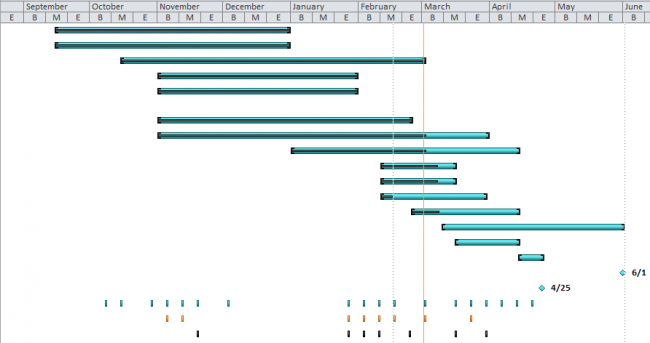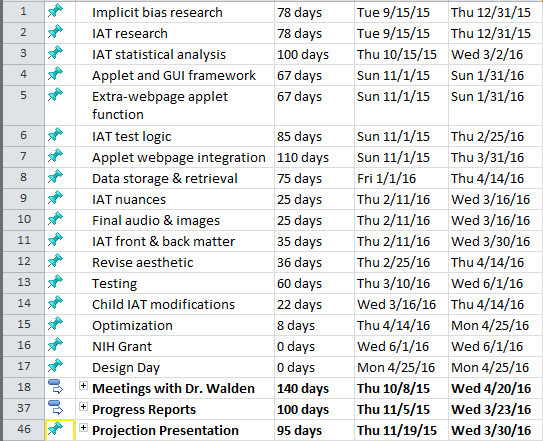Background:
Our team selected a project dealing with stuttering under the advisement of Dr. Tedra Walden of the Vanderbilt Departments of Psychology and Hearing and Speech Sciences and the Vanderbilt Kennedy Center. In this project, we aim to build a research tool to assess biases against stuttering and to provide feedback to those that we identify as having a preference towards those who do not stutter.
As of our last progress report, we were primarily focusing our efforts on finishing on making the program available online by uploading it to a host server. We had been encountering challenges in this task, as there was no clear path for us as undergraduates to acquire a server hosting location.
Achievements:
Since the last progress report, we have not accomplished any major tasks, but we have moved further along in a number of our main goals. First, the front and back matter of the IAT, where we collect demographic and explicit bias information, respectively, turned out to be a much more significant amount of coding than originally anticipated. We have however, come very close to completing this and fully integrating them into the applet. Second, we have made significant strides in acquiring a host server for our applet; however, this has been extremely difficult (see below for further explanation). Third, we identified a flaw in one of the words spoken in the applet. In the stuttered version of the word “building,” the stutter was indistinguishable from a pause, and therefore this may have corrupted our data. We had our sound engineer contact exaggerate this stutter in order to make the stutter more apparent. Fourth, we laid out a plan to acquire enough data by design day to do some preliminary analysis for the poster.
Challenges encountered:
The primary challenge at this stage in our project is applet webpage integration. We first reached out to Vanderbilt Web Communications with our inquiry, who re-directed us to the School of Engineering IT Department. We met with Phil VerMeulen, a member of the department. We discussed the needs of our program, and he has assured us that we will get it to work somewhere, somehow. We are not entirely sure whether this will be a short-term or long-term solution but either way we are encouraged. In order to figure out what server will work best, he wanted to use a finished version of our applet. While we are close to being finished, we are not quite there yet. So our top priority is now to complete all the sections of the IAT in order that Phil can help us get it on a hosting server.
We are very concerned at this point that it may not be possible to get the app on the website in time in order to collect enough data for design day. If this is the case, we will still have the program available for users to interact with; it will just not be on the internet. We believe that this is sufficient for demonstrating the functionality of our design. In the long term, however, our project mentor does need this to be online, so we are continuing to press on this issue.
Future work:
The next steps of the project can be seen in our project timeline (GANTT chart) below. In the next week, we anticipate finishing the applet, deploying it on a host server, beginning to collect data, and working on our Design Day poster.
Project timeline:
Bottom line:
We are less confident in our projections to have everything finished by Design Day, but we are certainly going to do everything we can to make sure that happens.


